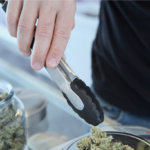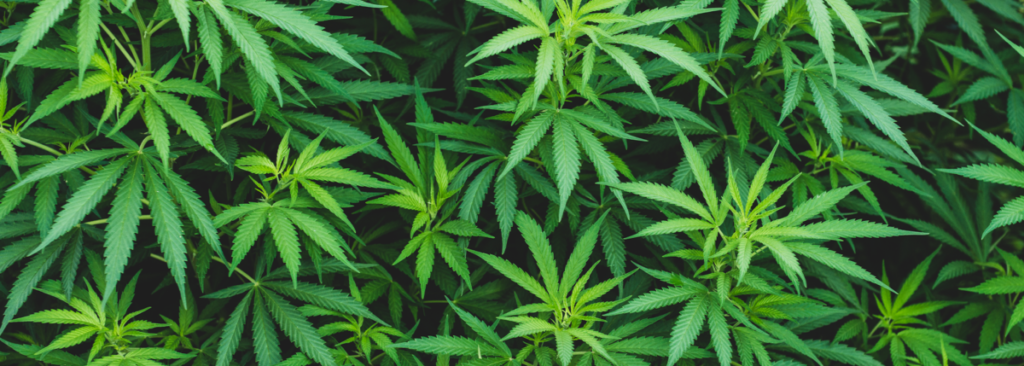Did someone say Weed?
Pot. Weed. Dope. Ganja. Mary Jane. Hash. Skunk. Blunt. Bo-Bo. Dinkie Dow. Hot Stick. Buda. Beast.
Name it as you wish, but one thing is for sure – in 2022 the taboos are being broken. Once a heavily satanized item, now a mainstream business model for many people, among them celebrities, marijuana climbed the ladder of success – slowly but steadily.
Now you have various products from juicy edibles to tasty chocolate bars to vaporizing pens – you name it, it’s on the market. In this race for profit, many celebrities have joined the club – some of them were just meant for this, like long-time users Snoop Dogg or Wiz Khalifa. Others came as a surprise, but hey money makes the world go around right?
The major deal nowadays is the wellness product cannabis industry. This means marijuana face creams, lotions, pain relief creams and more. How funny would that sound 30 years ago: “Hey, I just put on my favorite cannabis-infused mask, I am gonna Netlflix and chill a bit.” Or “Let me hydrate my face with a cool cannabis night cream.”
Now, let’s dive into FAQs:
Is marijuana a medicine?
The marijuana plant has chemicals that may help symptoms for some health issues. More and more states are making it legal to use the plant as medicine for certain conditions. But there isn’t enough research to show that the whole plant works to treat or cure these conditions. Also, the U.S. Food and Drug Administration (FDA) has not recognized or approved the marijuana plant as medicine. Because marijuana is often smoked, it can damage your lungs and cardiovascular system (e.g., heart and blood vessels).
These and other damaging effects on the brain and body could, theoretically, make marijuana more harmful than helpful as a medicine. Another potential issue with marijuana as a medicine is that the ingredients aren’t exactly the same from plant to plant. There’s labs that test strains, but it can be hard to know exactly how much you’re getting unless some extensive protocols are in place.
The marijuana plant can treat nausea if you have cancer and make you hungry if you have AIDS and don’t feel like eating. But the chemical used to make these medicines affects the brain also, so it can do things to your body other than just work as medicine. Another marijuana chemical that scientists are studying, called cannabidiol (CBD), doesn’t make you high because it acts on different parts of the nervous system than THC. Scientists think this chemical might help children who have a lot of seizures that can’t be controlled with other medicines. Some studies have shown promise.
Does marijuana use lead to other drug use?
The concept of marijuana as a “gateway drug”—where using marijuana leads a person to use other drugs—generates a lot of disagreement. Researchers haven’t found a definite answer yet. However, most people who use marijuana do not go on to use other, “harder” drugs. It is important to remember that people of any age, sex, or economic status can become addicted to marijuana or other drugs.
Things that can affect the likelihood of substance use include:
- Family history
- Having another mental health illness (such as anxiety or depression)
- Peer pressure
- Loneliness or social isolation.
- Lack of family involvement
- Drug availability
- Socioeconomic status
How many teens use marijuana?
NIDA’s annual Monitoring the Future survey reports that marijuana use has remained stable over the past few years among 8th, 10th, and 12th grade students. About 10% of 8th graders, 26% of 10th graders, and 37% of 12th graders reported using marijuana in the last year. At the same time, teens are developing more positive attitudes about using marijuana, with 71% of high school seniors saying they do not view regular marijuana smoking as very harmful.
Researchers have found that the use of marijuana and other drugs usually peaks in the late teens and early twenties, then declines in later years. Therefore, marijuana use among young people remains a natural concern for parents and is the focus of continuing research, particularly regarding its impact on brain development, which continues into a person’s early twenties. Researchers are studying how long marijuana’s effects last and if the changes could be permanent.
Can marijuana produce withdrawal symptoms when someone quits?
Yes. Many people who use the drug long-term and then stop have symptoms that are similar to those of nicotine withdrawal—irritability, sleep problems, anxiety, decreased appetite, and various forms of physical discomfort—which may prompt relapse (a return to drug use). Withdrawal symptoms are generally mild and peak a few days after use has stopped. They gradually disappear within about 2 weeks.14,15 While these symptoms do not pose an immediate threat to health, they can make it hard for someone to stop using the drug. Because withdrawal is not as obvious or as painful as withdrawal symptoms from some other drugs such as opioids, many people do not realize that stopping marijuana use can cause withdrawal symptoms.
Why is the Federal Government opposed to medical marijuana?
We’re not going to state an opinion here, but the government says this:
It is the Federal government’s position that marijuana is subjected to the same rigorous clinical trials and scientific scrutiny that the Food and Drug Administration (FDA) applies to all other new medications, a comprehensive process designed to ensure the highest standards of safety and efficacy.
It is this rigorous FDA approval process, not a popular vote, that should determine what is, and what is not medicine. The raw marijuana plant, which contains nearly 500 different chemical compounds, has not met the safety and efficacy standards of this process. According to the Institute of Medicine (IOM), smoking marijuana is an unsafe delivery system that produces harmful effects.
The FDA has, however, recognized and approved the medicinal use of isolated components of the marijuana plant and related synthetic compounds. Dronabinol is one such synthetically produced compound, used in the FDA-approved medicine Marinol, which is already legally available for prescription by physicians whose patients suffer from nausea and vomiting related to cancer chemotherapy and wasting (severe weight loss) associated with AIDS. Another FDA-approved medicine, Cesamet, contains the active ingredient Nabilone, which has a chemical structure similar to THC, the active ingredient of marijuana. And Sativex, an oromucosal spray approved in Canada, the UK, and other parts of Europe for the treatment of multiple sclerosis spasticity and cancer pain, is currently in late-stage clinical trials with the FDA. It combines THC and another active ingredient in marijuana, cannabidiol (CBD), and provides therapeutic benefits without the “high” from the drug.
A number of States have passed voter referendum or legislative actions allowing marijuana to be made available for a variety of medical conditions upon a licensed prescriber’s recommendation, despite such measures’ inconsistency with the scientific thoroughness of the FDA approval process. But these state actions are not, and never should be, the primary test for declaring a substance a recognized medication. Physicians routinely prescribe medications with standardized modes of administration that have been shown to be safe and effective at treating the conditions that marijuana proponents claim are relieved by smoking marijuana. Biomedical research and medical judgment should continue to determine the safety and effectiveness of prescribed medications.
Again, this is what the government says.
Couldn’t legalizing and taxing marijuana generate significant revenue?
While taxing marijuana could generate some revenues for state and local governments, research suggests that the economic costs associated with use of the drug could far outweigh any benefit gained from an increase in tax revenue.
In the United States in 2007, illegal drugs cost $193 billion ($209 billion in 2011 dollars) in health care, lost productivity, crime, and other expenditures. Optimistic evaluations of the potential financial savings from legalization and taxation are often flawed, and fail to account for the considerable economic and social costs of drug use and its consequences.
This issue is particularly relevant in the marijuana debate. For example, the California Board of Equalization estimated that $1.4 billion of potential revenue could arise from legalization. This assessment, according to the RAND Corporation is “based on a series of assumptions that are in some instances subject to tremendous uncertainty and in other cases not valid.”
Another recent report from RAND examines this issue in greater detail. The report concludes that legalization and taxation of marijuana would lead to a decrease in the retail price of the drug, likely by more than 80 percent. While this conclusion is subject to a number of uncertainties, including the effect of legalization on production costs and price and the Federal government’s response to the state’s legalization of a substance that would remain illegal under Federal law, it is fair to say that the price of marijuana would drop significantly. And because drug use is sensitive to price, especially among young people, higher prices help keep use rates relatively low.
The existing black market for marijuana will not simply disappear if the drug is legalized and taxed. RAND also noted that “there is a tremendous profit motive for the existing black market providers to stay in the market, as they can still cover their costs of production and make a nice profit.” Legalizing marijuana would also place a dual burden on the government of regulating a new legal market while continuing to pay for the negative side effects associated with an underground market, whose providers have little economic incentive to disappear.
Legalization means the price comes down; the number of users goes up; the underground market adapts, and the revenue gained through a regulated market most likely will not keep pace with the financial and social cost of making this drug more accessible.
Consider the economic realities of other substances. The tax revenue collected from alcohol pales in comparison to the costs associated with it. Federal excise taxes collected on alcohol in 2009 totaled around $9.4 billion; state and local revenues from alcohol taxes totaled approximately $5.9 billion. Taken together ($15.3 billion), this is just over six percent of the nearly $237.8 billion adjusted for 2009 inflation) in alcohol-related costs from health care, treatment services, lost productivity, and criminal justice.
While many levels of government and communities across the country are facing serious budget challenges, we must find innovative solutions to get us on a path to financial stability – it is clear that the social costs of legalizing marijuana would outweigh any possible tax that could be levied.
It remains for us to be patient and see what the will future bring in the cannabis industry. The most important component of that success is great customer service because a happy customer will come back again and buy more products. That is why the Call Canna team is here, to be a backbone of the industry and to help its growth even more. The future looks high, I mean bright.
Jennifer Johnson
References: https://obamawhitehouse.archives
Wikipedia
https://www.cdc.gov/














